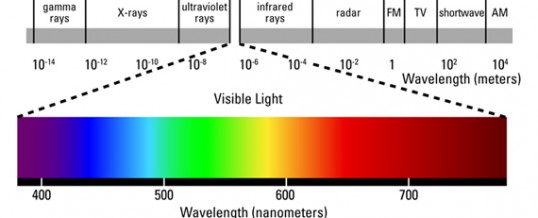
Color quality is one of the key challenges facing light-emitting diodes (LEDs) as a general light source. This paper reviews the basics regarding light and color and summarizes the most important color issues related to white light LEDs.
Unlike incandescent and fluorescent lamps, LEDs are not inherently white light sources. Instead, LEDs emit light in a very narrow range of wavelengths in the visible spectrum, resulting in nearly monochromatic light. This is why LEDs are so efficient for colored light applications such as traffic lights and exit signs. However, to be used as a general light source, white light is needed. The potential of LED technology to produce high-quality white light with unprecedented energy efficiency is the impetus for the intense level of research and development currently being supported by the U.S. Department of Energy.
White Light from LEDs
White light can be achieved with LEDs in two main ways:
1) phosphor conversion, in which a blue or ultraviolet (UV) chip is coated with phosphor(s) to emit white light;
2) RGB systems, in which light from multiple monochromatic LEDs (red, green, and blue) is mixed, resulting in white light.
The phosphor conversion approach is most commonly based on a blue LED. When combined with a yellow phosphor (usually cerium-doped yttrium aluminum garnet or YAG:Ce), the light will appear white to the human eye. A more recently developed approach uses an LED emitting in the near-UV region of the spectrum to excite multi-chromatic phosphors to generate white light.
The RGB approach produces white light by mixing the three primary colors red, green, and blue. Color quality of the resulting light can be enhanced by the addition of amber to “fill in” the yellow region of the spectrum. Status, benefits and trade-offs of each approach are explored here after.
What is White Light?
What appears to our eyes as “white” is actually a mix of different wavelengths in the visible portion of the electromagnetic spectrum. Electromagnetic radiation in wavelengths from about 380 to 770 nanometers is visible to the human eye.
Example of a Typical Incandescent
Spectral Power Distribution
Incandescent, fluorescent, and high-intensity discharge (HID) lamps radiate across the visible spectrum, but with varying intensity in the different wavelengths. The spectral power distribution (SPD) for a given light source shows the relative radiant power emitted by the light source at each wavelength. Incandescent sources have a continuous SPD, but relative power is low in the blue and green regions. The typically “warm” color appearance of incandescent lamps is due to the relatively high emissions in the orange and red regions of the spectrum.
Comparison of White Light LED Technologies
Each approach to producing white light with LEDs (described above) has certain advantages and disadvantages. The key trade-offs are among color quality, light output, luminous efficacy, and cost. The technology is changing rapidly due to intensive private and publicly funded research and development efforts in the U.S., Europe, and Asia. The primary pros and cons of each approach at the current level of technology development are outlined below.
| Advantages | Disadvantages | |
| Blue LED + phosphor |
• Most mature technology |
• High CCT (cool/blue appearance) |
| Near-UV LED + phosphor |
• Higher color rendering |
• Less mature technology |
| RGB |
• Color flexibility, both in multi-color displays and different shades of white |
• Individual colored LEDs respond differently to drive current, operating temperature, dimming, and operating time |
Approaches to producing white light with LEDs
Most currently available white LED products are based on the blue LED + phosphor approach. Phosphor-converted chips are produced in large volumes and in various packages (light engines, arrays, etc.) that are integrated into lighting fixtures. RGB systems are more often custom designed for use in architectural settings.
Typical Luminous Efficacy and Color Characteristics of Current White LEDs
How do currently available white LEDs compare to traditional light sources in terms of color characteristics and luminous efficacy? Standard incandescent A-lamps provide about 15 lumens per watt (lpw), with CCT of around 2700 K and CRI close to 100. ENERGY STAR qualified compact fluorescent lamps (CFLs) produce about 50 lpw at 2700-3000 K and CRI at least 80. Typical efficacies of currently available LEDs from the leading chip manufacturers are shown below. Improvements are announced by the industry regularly.
| CCT CRI | 70-79 | 80-89 | 90+ |
| 2600-3500 K | 23-43 lpw | 16 lpw | |
| 3500-5000 K | 33-47 lpw | 27 lpw | |
| > 5000 K | 33-56 lpw | 38 lpw |
Share
JUN
2016


